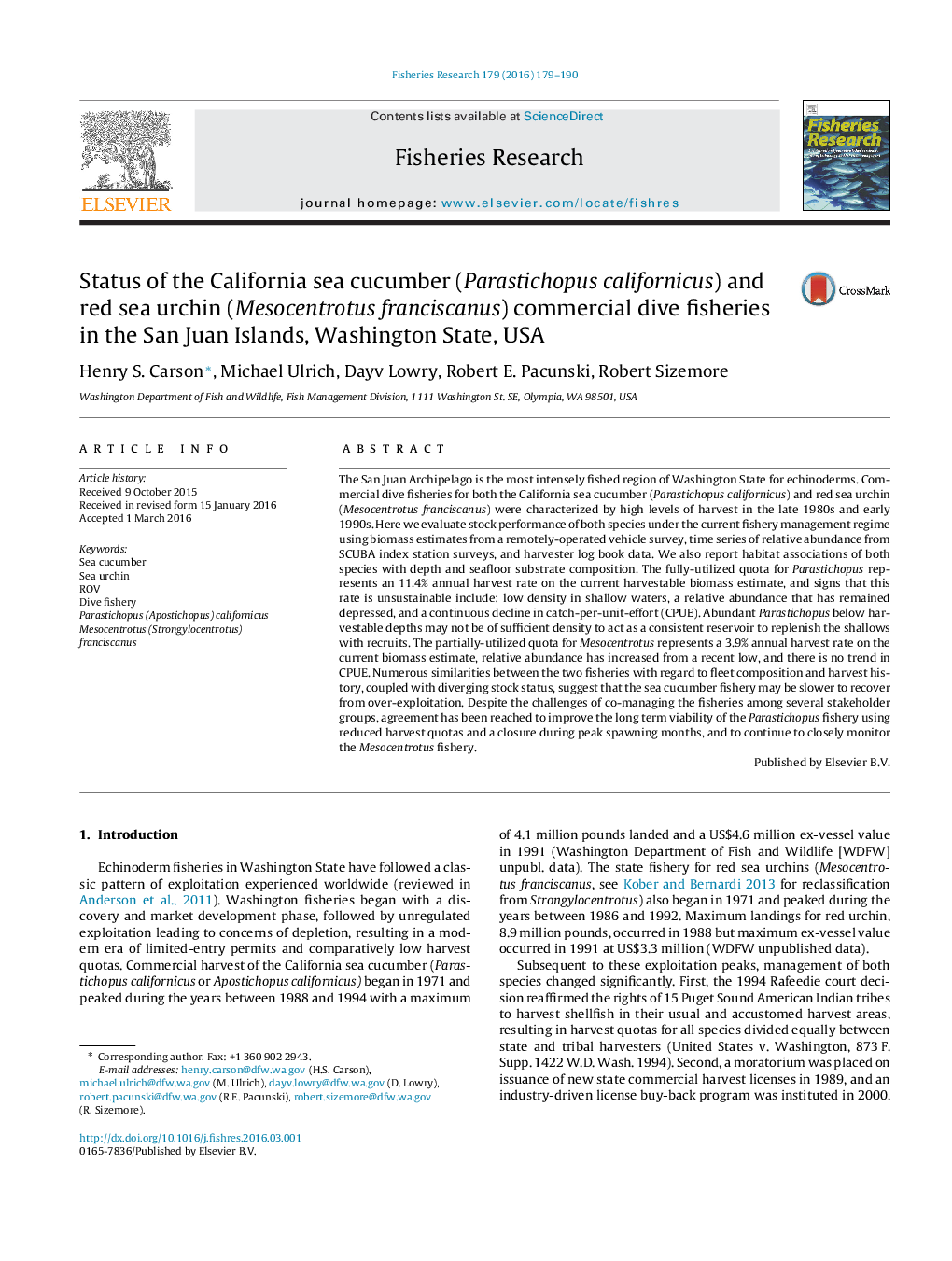| کد مقاله | کد نشریه | سال انتشار | مقاله انگلیسی | نسخه تمام متن |
|---|---|---|---|---|
| 6385356 | 1626790 | 2016 | 12 صفحه PDF | دانلود رایگان |
عنوان انگلیسی مقاله ISI
Status of the California sea cucumber (Parastichopus californicus) and red sea urchin (Mesocentrotus franciscanus) commercial dive fisheries in the San Juan Islands, Washington State, USA
دانلود مقاله + سفارش ترجمه
دانلود مقاله ISI انگلیسی
رایگان برای ایرانیان
موضوعات مرتبط
علوم زیستی و بیوفناوری
علوم کشاورزی و بیولوژیک
علوم آبزیان
پیش نمایش صفحه اول مقاله

چکیده انگلیسی
The San Juan Archipelago is the most intensely fished region of Washington State for echinoderms. Commercial dive fisheries for both the California sea cucumber (Parastichopus californicus) and red sea urchin (Mesocentrotus franciscanus) were characterized by high levels of harvest in the late 1980s and early 1990s. Here we evaluate stock performance of both species under the current fishery management regime using biomass estimates from a remotely-operated vehicle survey, time series of relative abundance from SCUBA index station surveys, and harvester log book data. We also report habitat associations of both species with depth and seafloor substrate composition. The fully-utilized quota for Parastichopus represents an 11.4% annual harvest rate on the current harvestable biomass estimate, and signs that this rate is unsustainable include: low density in shallow waters, a relative abundance that has remained depressed, and a continuous decline in catch-per-unit-effort (CPUE). Abundant Parastichopus below harvestable depths may not be of sufficient density to act as a consistent reservoir to replenish the shallows with recruits. The partially-utilized quota for Mesocentrotus represents a 3.9% annual harvest rate on the current biomass estimate, relative abundance has increased from a recent low, and there is no trend in CPUE. Numerous similarities between the two fisheries with regard to fleet composition and harvest history, coupled with diverging stock status, suggest that the sea cucumber fishery may be slower to recover from over-exploitation. Despite the challenges of co-managing the fisheries among several stakeholder groups, agreement has been reached to improve the long term viability of the Parastichopus fishery using reduced harvest quotas and a closure during peak spawning months, and to continue to closely monitor the Mesocentrotus fishery.
ناشر
Database: Elsevier - ScienceDirect (ساینس دایرکت)
Journal: Fisheries Research - Volume 179, July 2016, Pages 179-190
Journal: Fisheries Research - Volume 179, July 2016, Pages 179-190
نویسندگان
Henry S. Carson, Michael Ulrich, Dayv Lowry, Robert E. Pacunski, Robert Sizemore,